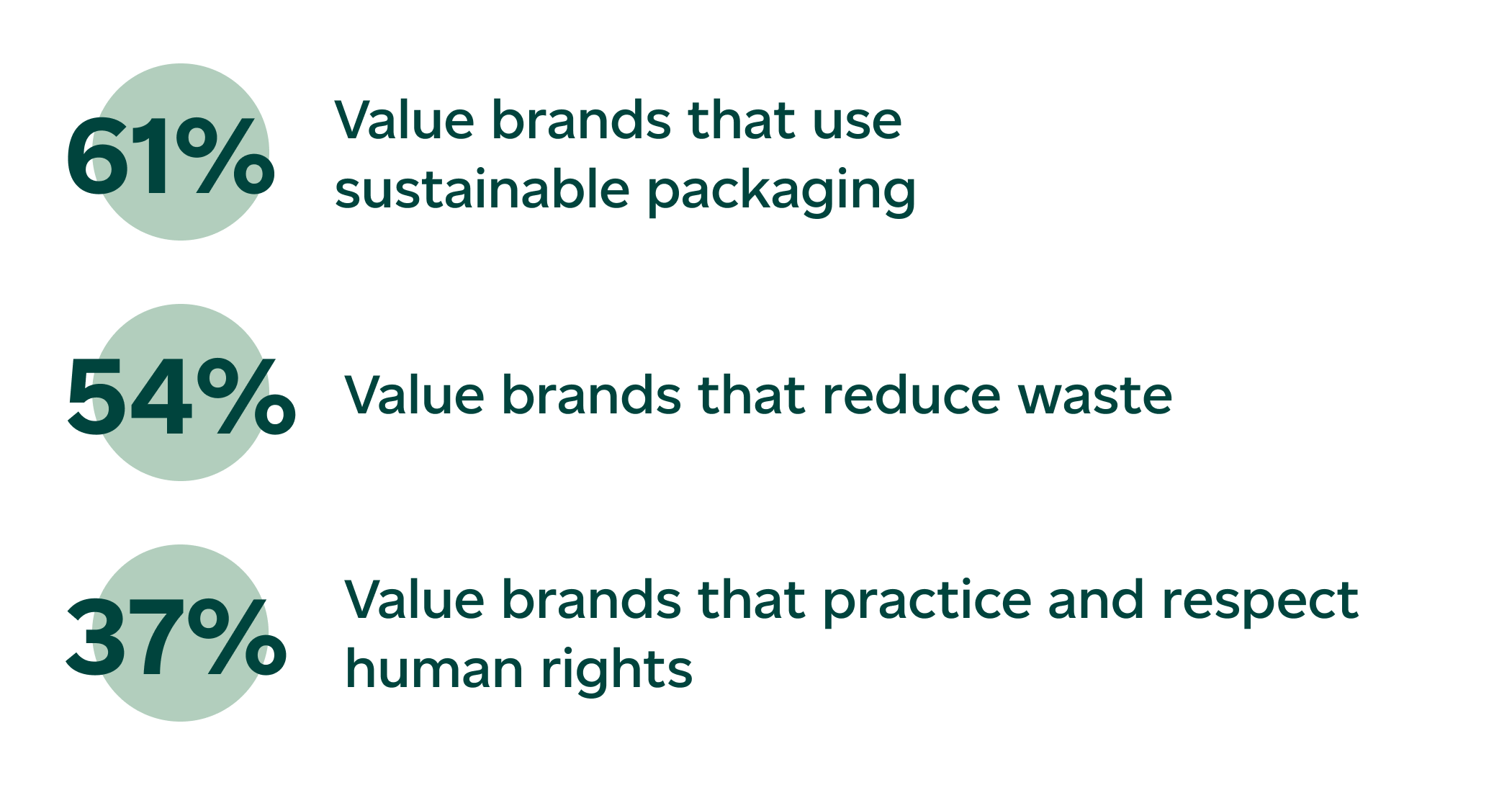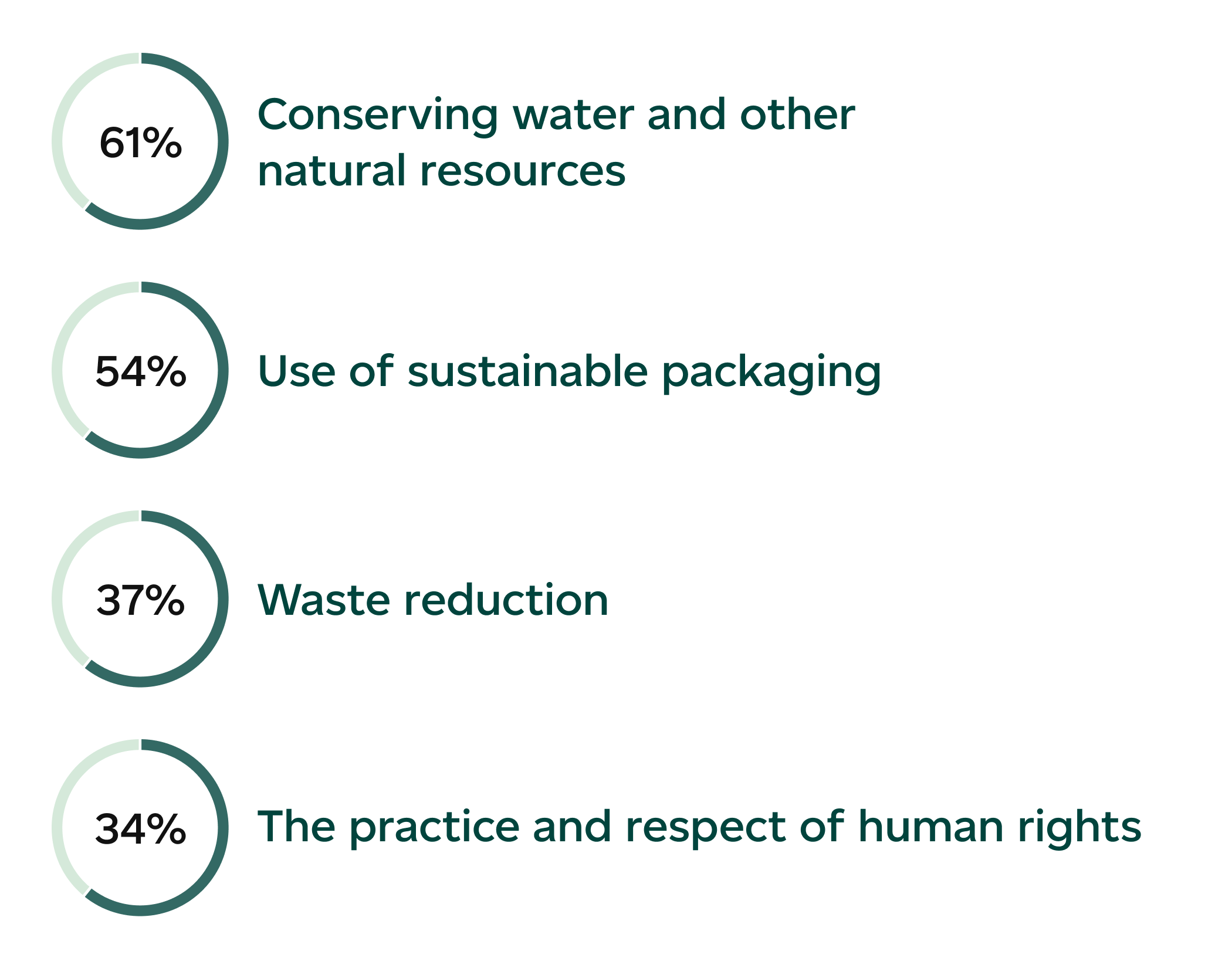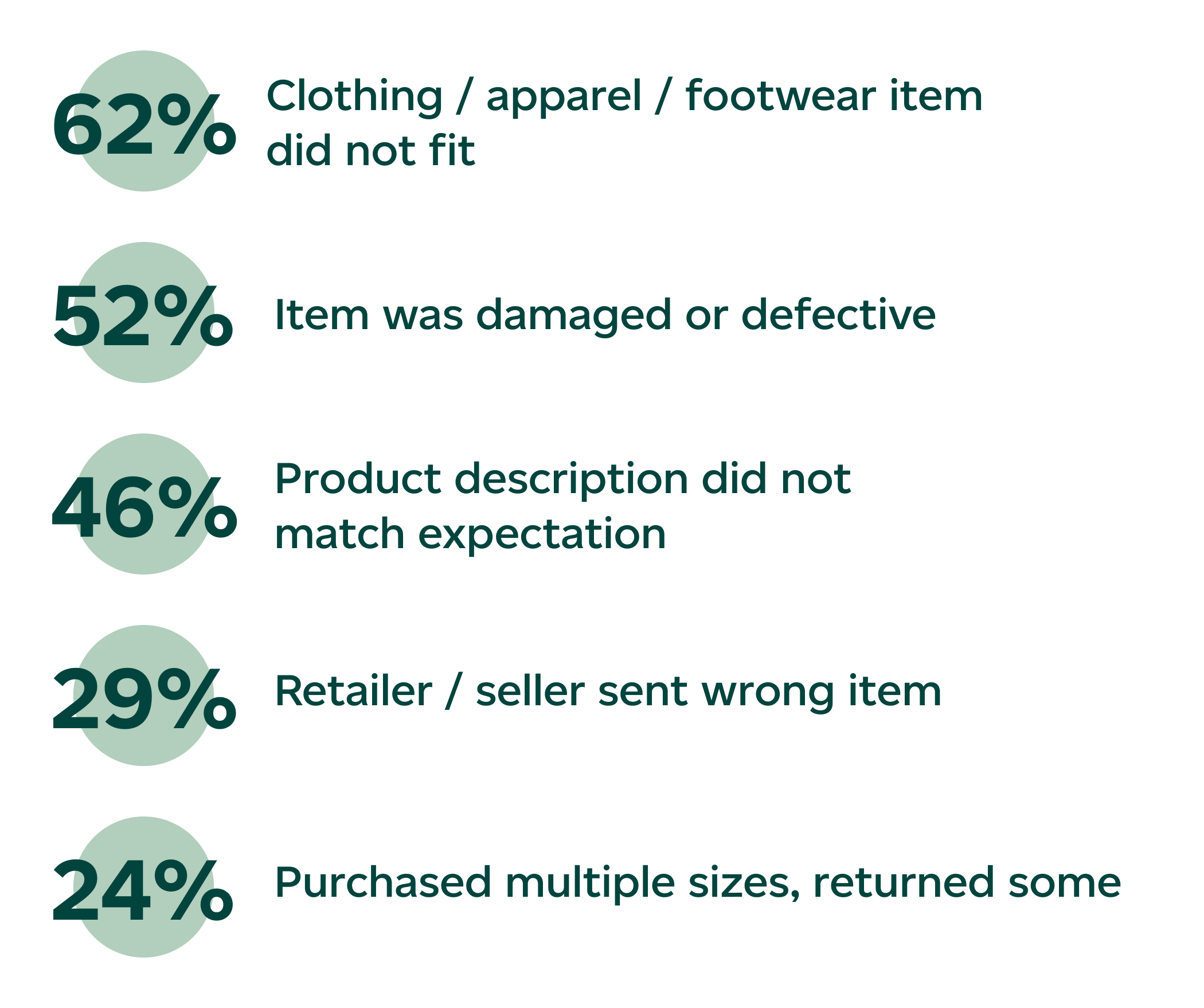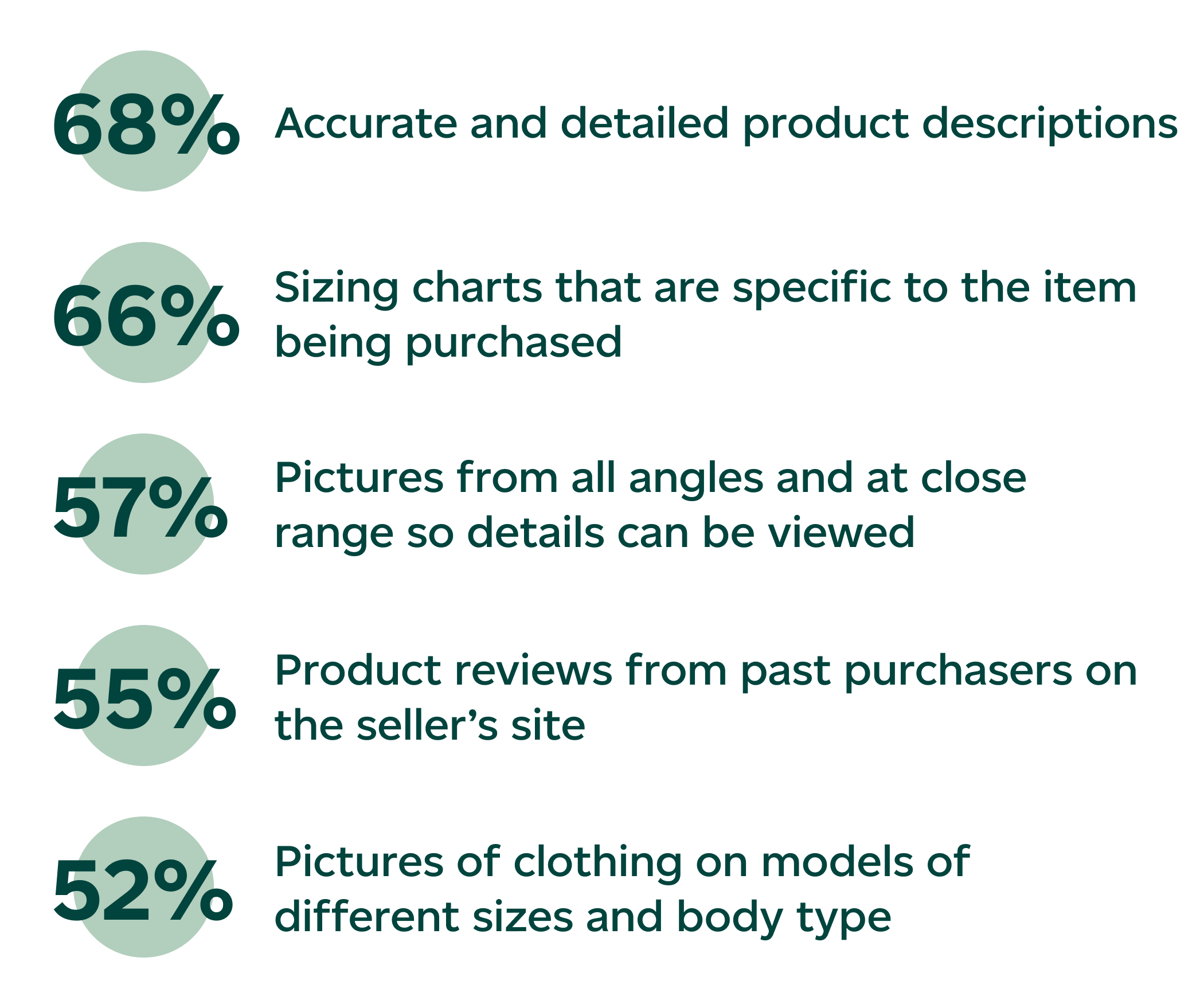Today’s shoppers want it all from you. Be sustainable but be speedy. Be efficient but deliver with the planet in mind. Be affordable but reduce impact. Easier said than done!
Sustainable commerce is full of challenges – especially striking the right balance between being a green business and being profitable. No matter where you are in your sustainable business journey, this guide is designed to inspire you with insights, strategies and considerations to inform how you think about environmental opportunities across your operations. From packaging and shipping to returns and last-mile delivery, you’ll find advice on how to optimize your brand’s sustainable practices.
Download now: Greening your ecommerce operations [Free guide] or keep reading this post.
Table of Contents
Understanding the conscious consumer
Packaging with the planet in mind
Making your shipping processes sustainable
Reducing the environmental impact of returns
Optimizing delivery methods and last-mile delivery
Sustainability at Canada Post
Understanding the conscious consumer
Sustainability isn’t a fad or a buzz word – it reflects ingrained values and expectations of Canadians. Reducing waste and pollution, using natural resources wisely, keeping waterways clean and free of plastics – these topics, and many more, are important to Canadians.
Shoppers are evaluating retailers against their competition, but they’re not only considering product, price and choice. Our recent research tells us that two-thirds of Canadian online shoppers want businesses to take meaningful action on environmental and social issues.1
Here’s a glimpse of insights we found.
Finding alignment
Canadians will shop more often with brands that follow environmentally sustainable or ethical practices:1

A company that is considered socially responsible provides quality, transparency, eco-consciousness and sustainable manufacturing practices. They work to benefit the environment and health of their workers over profits. They create while also leaving behind the smallest footprint they can. They are the opposite of fast fashion or fast fashion companies slapping a ‘recycled material’ label on their products and calling themselves environmentally conscious while simultaneously polluting the water with dye run off.¹
Willing to pay
Canadians are willing to pay more for goods and services from brands committed to environmental, social and governance (ESG) practices like:¹
I need to have more education on what product materials are good/bad for environment. I see and hear lots of news about many socially responsible products and companies, but I do not know if it's true or not.1
Breaking down barriers
Cost and information are Canadians’ biggest barriers to sustainable consumption. How can you respond?
Offer sustainable solutions
When shopping online, 71% of Canadians are looking to brands to provide more sustainable solutions to help reduce packaging waste and offset the impacts on climate change.1
Share educational information
Another 71% say they need more information to make more sustainable choices when shopping.1
Take meaningful action
Two-thirds of Canadians (66%) say it’s important the businesses/brands they support take meaningful action to improve their environmental and social performance.1
Doubling down on positive impact
How can brands make their values known with real impact? As you prepare for what’s next on your sustainable business journey, embrace and explore consumer sentiments to help you evaluate key aspects of your ecommerce operations and identify gaps between your current practices and how to make a positive difference.
ADDITIONAL READING:
Want to know more? Read our report, Pulse of the conscious consumer: Insights for navigating the new frontier of sustainable commerce.
Retailer spotlight: Buttercream Clothing
Buttercream Clothing is a direct-to-customer ethical clothing e-retailer known as much for inclusivity as for the quality and comfort of its collections.
Slow fashion does not necessarily work for everyone. But our community has really taken to it and even educates their friends and family on what to expect when ordering.

Discover how the company embraced community and communication to bring slow fashion into the future.
Find out morePackaging with the planet in mind
The sustainability of your packaging can greatly influence environmentally minded consumers to shop with you. In fact, a majority of Canadians say sustainable packaging (61%) and waste reduction (54%) are valued most when purchasing from a particular retailer brand.1 It’s important to consider, as it’s an element that continues to become a powerful motivator for shoppers.
10 ways to reduce your brand’s footprint
There are many effective ways that retailers can reduce their impact on the environment.
1. Increase the percentage of recycled content in your packaging
This is different from material that can be recycled; it’s material that has already been recycled, and it’s a big selling point with eco-minded customers.
2. Avoid multi-material packaging
Packaging that is composed of different materials can make it difficult for customers to recycle.
3. Use optimally sized packaging
Don’t pack items in boxes that are unnecessarily large or that are filled with a lot of unrecyclable filler. It’s wasteful and suggests you are not taking excess packaging into consideration – which could get you a bad review or make you the subject of a bad post on social media.
4. Pack items from a single order together when possible
Avoid sending two separate packages to the same address. This will help you save on several fronts: shipping costs, inventory of packaging materials and carbon emissions.
5. Consult suppliers on sustainable packaging
Growing ecommerce businesses can seek out environmental consulting firms to help them understand the pros and cons of using different packaging materials and get advice on how to take steps in the right direction.
6. Explore reusable packaging models
This would allow customers to send back the package in which they received their item to the seller or third-party company that was responsible for the shipment, for the packaging to be controlled, cleaned, and returned for reuse by a third party or the seller again.
7. Train your packaging teams
Ensure they know that customers are evaluating packaging in environmental terms and have staff package items securely to avoid excess space, damage and consequential returns, which would increase packaging waste.
8. Communicate with your customers
Tell them if and how your packaging can be recycled and how they can help. Whether on your website, social media, order confirmation emails – make sure they are aware of your commitment and how it supports theirs.
9. Invest in recyclable void fillers
Packaging paper, tissue paper, biodegradable or corrugated bubble wrap, crinkled and shredded paper, biodegradable packaging peanuts and die-cut kraft paper are all environmentally conscious options that will protect items during transit.
10. Factor in weather conditions
Some compostable and biodegradable packaging options can be affected by extreme weather conditions. This means that additional care and considerations are needed due to the biodegradable nature of the packaging. It’s important to work with partners that have weather-secure mailboxes or lockers that will protect items and keep items intact upon delivery.
ADDITIONAL READING:
Interested in understanding how to optimize your packaging for a healthier bottom line? Check out our guide, Packaging for success, for all the details.
Retailer spotlight: Ecocat
Ecocat offers soybean-based cat litter – a completely plant-based product that controls odour while being biodegradable and compostable.
We are not only selling litter, but we are also giving information and advice to customers, while also helping them lessen their impact on the planet.

Discover how the Montreal-based company engineered a vacuum bag and biodegradable packaging to maximize shipping efficiency and minimize environmental impact.
Find out moreMaking your shipping processes more sustainable
Growing concerns about climate change has caused ecommerce brands to rethink their shipping strategies. As Canadians become more interested in sustainable options, brands in the supply chain must adapt their processes to meet demands.
Understanding greenhouse gas emissions
Trucks, airplanes, trains and ships are used to move parcels across Canada and around the world. These modes of transport use fossil fuels like gas, oil and diesel that emit CO2 emissions.
Greenhouse gas – often abbreviated as GHG – emissions are measured in carbon dioxide-equivalents (CO2e). Carbon dioxide equivalents attempt to convert the warming impact of the range of GHG into a single metric.
Carbon dioxide emissions – or CO2 emissions –are the primary GHG emitted through the burning of fossil fuels like coal, natural gas, oil and the manufacture of cement.
Calculating GHG emissions from shipping
Understanding your business’ GHG emissions from ecommerce delivery is a critical first step to reducing your environmental impact. Canada Post’s GHG emission calculation methodology helps ecommerce customers determine the GHG emissions released into the environment from their packages. This encompasses emissions released from origin to destination in our delivery network. This methodology has been verified by UL Solutions and provides businesses with accurate, data-driven reporting to help leaders make more informed decisions.
Four ways to reduce your environmental impact
There are many effective ways that retailers can reduce their impact on the environment.
1. Offering customers shipping services that are less impactful on the environment
Greener shipping methods can help you meet and exceed customer expectations and set your business apart while lessening your environmental footprint.
Carbon-neutral shipping is the practice of balancing carbon emissions generated from shipping by purchasing carbon offsets and neutralizing their impact.
Shifting to shipping services that are carbon neutral brings you one step closer to helping protect the environment and ensuring that as your ecommerce business grows, you are taking environmental impact into consideration.
To accomplish carbon-neutral shipping, you can work with a partner that offers solutions to offset carbon emissions from ecommerce delivery. For instance, when using Canada Post, all ground shipping services are carbon neutral, including domestic Regular Parcel™ items and Expedited Parcel™. GHG emissions from delivering parcels are calculated and the equivalent amount of carbon credits are purchased to balance out those emissions.
ADDITIONAL READING:
Need to know more about carbon-neutral shipping? Discover how we’re providing more sustainable shipping options for Canadians.
2. Encouraging ground shipping services when possible
You might be surprised to learn that items travelling by air emit more GHG than ground delivery services. When you provide shoppers with information like this, and options to make informed purchasing decisions, they may surprise you. For example, more than half of shoppers are interested in receiving their online orders through environmentally friendly delivery methods – and 54% are prepared to wait longer for an item if it’s being shipped by a more sustainable method.2
Shoppers benefit from more information about their choices. Help them balance speed and responsibility.
3. Distributing inventory to multiple fulfilment centers
Distributing your inventory across multiple fulfilment centers can not only help you reduce shipping costs and improve delivery times, but it can also help reduce carbon emissions. Multi-location order fulfilment allows you to split inventory across locations and pick, pack and ship orders from the distribution center closest to where the customer lives.
To keep your shipping costs and carbon emissions down, it’s essential that you don’t run out of stock at any of your multi-warehouse locations, causing you to ship extra inventory from another location. Data from each warehouse will need to be integrated to get a full picture of your inventory.
4. Scheduling parcel pickup
It can be more eco-friendly to arrange for parcel pickup rather than making multiple trips to a facility for business deposit. Major delivery service routes are optimized to be environmentally efficient. When each vehicle on the road is optimized to carry as much volume as possible, fewer vehicles are needed to meet demand in a region.
Reducing the environmental impact of returns
The role of returns in the purchase journey
Free shipping on returns can greatly influence a shopper’s decision to buy from a brand. Yet, nearly half of Canadians (48%) say they are concerned about the environmental impact of product returns from online shopping.1 That’s understandable when you consider that 5 billion pounds of waste are generated annually through returns.3
Retailers have the hard task of balancing the best shopper experience and protecting their margins – all while figuring out what to do with the return on the back end. Here are some hints on how to improve the sustainability of the returns process and reduce costs:
Understand why returns are happening – it’s key to reducing the number of returns and your returns waste
Experts say the best way to reduce waste is to prevent returns from happening in the first place. So, what are the top reasons Canadians return items?1

While this data can act as a guide, capturing this level of detail from your customers at the point of return will help paint a clearer picture and inform areas where you need to improve.
Balancing returns and sustainability
Improve the online customer experience by providing more detailed information, user-generated content, and realistic visuals
How are you helping your customers make informed purchases? Explore virtual try-on experiences and/or ensure that your product pages have plenty of information. You could share detailed descriptions, measurements and high-quality product imagery to encourage your customers to visualize wearing or using an item themselves.
What kind of features do Canadians say would help?1

Ensure products are tightly and securely wrapped with sufficient cushioning and reinforcing materials so they arrive undamaged
This helps eliminate the need for unnecessary returns from the start, but will also ensure that items are protected should they have to be sent back since 81% re-use the original packaging to return items.1
Offer a re-commerce program for your products
Sustainability and reverse commerce initiatives allow customers to return their used products in exchange for things like store credits, gift cards and discounts. The retailer will then clean up the items and resell them in-store or online at a reduced price. Resell programs get brands one step closer to a fully circular supply chain while driving customer loyalty.
Consider donating ecommerce returns
Rather than destroying returned merchandise, consider doing something positive with unwanted products by donating the items to support those who might need them.
Lean on a carrier that supports reusable packaging
Reusable packaging can be used to facilitate returns or be sent back empty – both options divert waste from landfills and keep packaging in circulation for future use.
Educate consumers to think about the decisions they make around returns
Tell them how you’re making it easier for them to make sustainable choices and help them understand how different options have different impacts. For example, using carbon-neutral shipping services reduces the impact of the returns, while also maintaining the convenience shoppers are looking for.
Optimizing delivery methods and last-mile delivery
The last mile – that final stage of the shipping and delivery process – should never be an afterthought. As online sales continue to grow steadily, so do GHG emissions from ecommerce delivery.
The way ecommerce orders get delivered has a substantial impact on a brand’s carbon footprint. When choosing a delivery partner, consider the sustainability of their delivery model and the steps they’re taking to reduce their environmental footprint.
The sustainability checklist: What to look for in a partner
All sustainable brands have common characteristics which help them succeed in improving their collective environmental impact. Consider these characteristics as a compass to work with partners that align with your environmental interests and objectives.
Shares goals and values
Knowing your values and the values of suppliers and partners is essential in building a relationship that works for both parties. It’s important that partners share the same vision and goals for their business to achieve positive outcomes.
Focuses on employee well-being
Employees are an imperative link in helping consumers complete their online shopping journey. Partners that prioritize people and purpose are critical for business results.
Embraces diversity, equity, and inclusion
Sustainable businesses are not only focused on the environment, but include greater equality, fair wages and investing in diversity to build stronger operations.
Supports the local community
It’s important to find partners that offer community support, presence and provide opportunities that help create a stronger, more sustainable community while stimulating the local economy.
Reduces fossil fuel use in vehicles
This could be through remote work, electric vehicles and cargo-bikes, or an energy-efficient fleet.
Calculates carbon and GHG emissions
Identifying GHG emission via your partners brings accountability to your sustainability program and makes it easier to assess your current state and inform your future goals.
Is trustworthy
A provider that can combine reach and trust while positively contributing to the community will offer sustained success with your shoppers and customers.
Retailer spotlight: Auora Heat
Aurora Heat promotes the traditional use of fur while educating shoppers about what sustainability means in the modern world.
“I’m proud my business reflects this and sustainability practices that cultivate abundance – from how we source our furs, to the delivery carrier we use”.

The brand ships in simple, minimal packaging of recyclable, lightweight cardboard and paper inserts. Part of their sustainability commitment also involves creating positive impact in their community.
Find out moreSustainability at Canada Post
At Canada Post, we are focused on the environment and are committed to reducing our impact to deliver a more sustainable future for Canadians. We are journeying towards a 50% decrease in greenhouse gas emissions by 2030, setting Canada Post on a path to net zero emissions by 2050. We’re investing in electrifying our fleet of 14,000 vehicles by 2040. We’re continuing to innovate in sustainable delivery solutions, testing new types of low and zero-carbon delivery vehicles like e-cargo trikes and low-speed electric vehicles on select postal routes in urban cities.
When it comes to sustainable parcel processing, we’re retrofitting existing facilities and designing new facilities to be zero-carbon ready, which is why we’re introducing a new state-of-the-art, net-zero parcel-sorting facility in Scarborough, Ontario that will be a key hub in our national network.
Sources:
1Phase 5. Canadian Online Shopper Study, May 2022.
2Descartes. Retailers: Sustainability is Not a Challenge, It’s an Opportunity.
3Harriet Constable, “Your brand new returns end up in landfill,” BBC Earth.
Move your sustainability objectives forward
Learn how Canada Post can support your sustainability objectives with solutions, tools, and resources.
Contact us